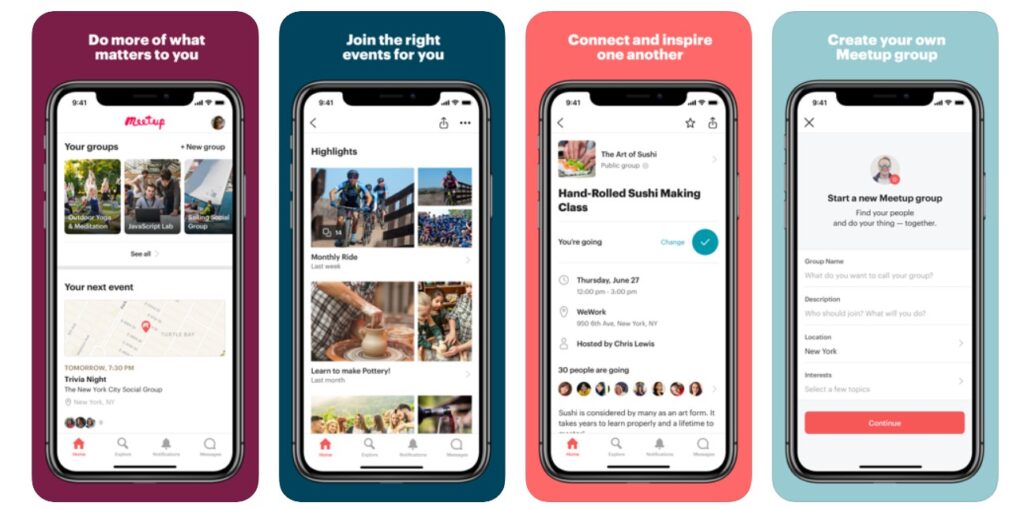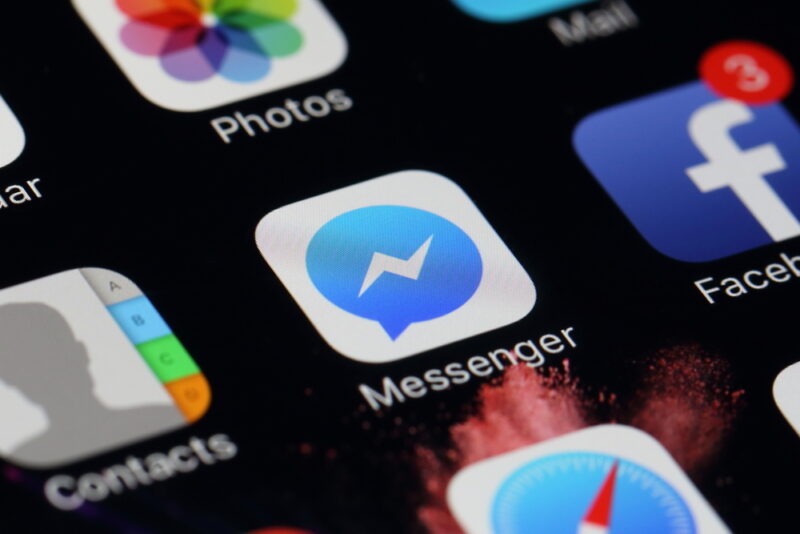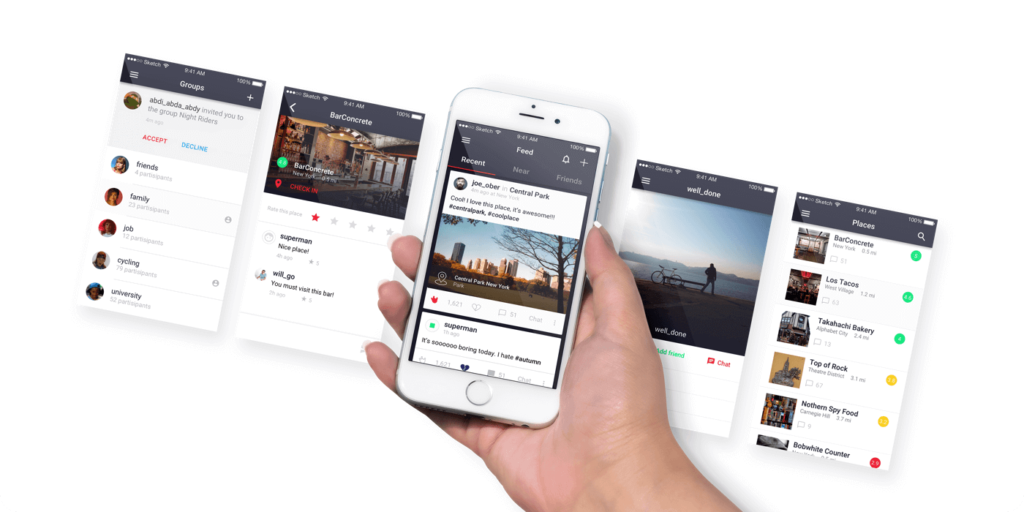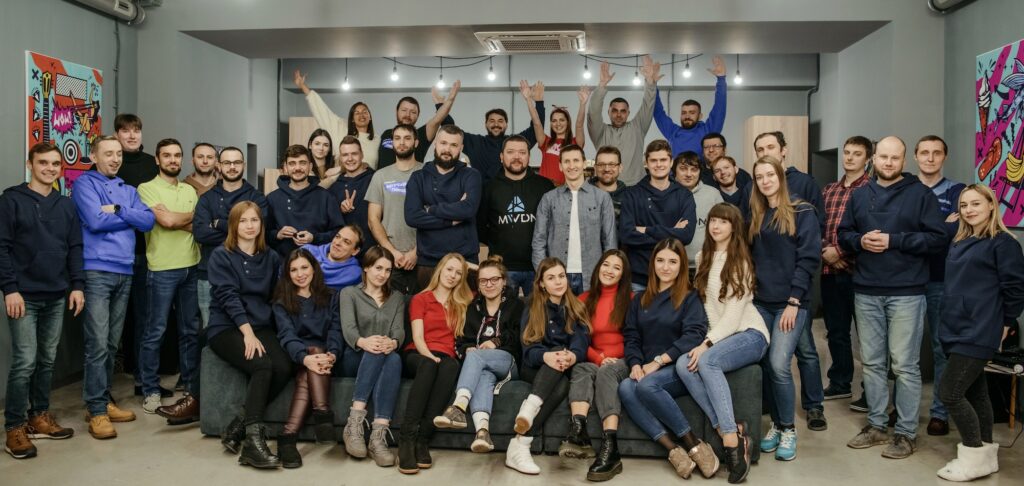
- 8 types of social media applications
- Primary features of social network apps
- How to create your own social media app?
- How much does it cost to create a social media app?
According to statistics, 3.91 of 3.96 billion people actively using social media, use mobiles to get access to their favorite platforms. For this reason, companies decide to start running their social media on mobile and wonder how to make a social media app. As our experience includes the building of social networks, like an anonymous app Smupp, our specialists can provide some valuable tips on the process of successful app creation.
Keep on reading to find out more about the history and types of social media, primary features necessary to run your first MVP, how to create a social media app, and how much it might cost you.

Number of social media users in billions, Statista, 2020
Some researchers state that the history of social media has started in the late 60s and the early 70s from the PLATO (Programmed Logic for Automated Teaching Operations) system developed by the University of Illinois and ARPAN (Advanced Research Projects Agency Network), the first military attempt to create social media. These might be the prototypes, but the first real social media that included the possibility to create a personal account and to interact with other users was the Six Degrees company that appeared in 1997.

Six Degrees, the first social media
The beginning of the 21 century was the flourishing period for the internet and the time when modern social media giants started to appear. LiveJournal was created in 1999, Friendster appeared in 2002, LinkedIn was founded in 2003, and in 2004, Facebook emerged. In 2005 YouTube was born. In 2006, MySpace became the most popular social media in the world and in 2009 it lost the battle for popularity to Facebook and was sold to Time Inc. in 2016.
Our time: statistics and trends
What we have today are more than 30 social networking sites that are popular around the world, like Instagram and Snapchat, and some smaller local companies that work only for the audience of a particular region, like Chinese RenRen or Russian VKontakte.

The most popular social media worldwide, Statista, 2020
When it comes to trends and future predictions, we are positive that social media are at the peak of popularity and the market will continue to grow. But what exactly is going to change in how we use our favorite platforms?
More videos
Instagram offers stories, lives, and IGTV, Facebook now has a Facebook Watch, while new services like Vine, Likee, and TikTok appear every year. Small funny videos and large documentaries are more popular then tiny tweets or long-reads with no visuals or audios. If you’re a content producer and want to keep up with the times, you have to make videos.
More interactions
Augmented reality, filters, frames, masks, games, and puzzles: all these things increase the time the user spends with the application which means they’re going to fill in social media in the nearest future.
Growth of niche media
Of course, a user can create a community on Facebook to keep in touch with people who share his or her interests. Or they can become the future audience of a social media app that will fully correspond to their particular needs. Today, we have great examples of MeetUp or Goodreads as niche networks for people with the same hobbies and interests.

The main reason why part of the Instagram users feel unsatisfied with the service is that today there is an enormous number of business accounts out there and they continue to push their products and “cooperate” with influencers, transforming the network with nice pictures into the advertising channel.
Advanced advertising
Many software developers decide to create a social media app because they know that this kind of project is extremely easy to monetize. Give your users the opportunity to express themselves and indicate their interests, turn on the geolocation, and, voila, you have a ready-to-use database you can now sell to third parties.
Anonymous and confidential networks
Multiple privacy scandals that took place during the last few years have demonstrated that the confidentiality guarantee is important for the public and can dramatically affect the success of your application and the price of your company. These scandals have also increased the popularity of anonymous social media. MWDN has experience in developing this kind of apps, as several years ago we’ve created SMUPP social network, an anonymous social media.

Before we get to the technical issues of social media app development, let’s make sure we have the same perspective over various categories of social networks. Here are the eight major types of social media that today are popular all around the globe.
1. Social network applications
These are websites and apps that allow connecting with people. The most iconic players in this category are Facebook (2.7 bln users) and LinkedIn (660 mln users). They help users find new friends or coworkers, communicate with each other by sending direct messages and sharing various content, and participate in the digital life of each other by checking out new statuses and reacting to them with likes, shares, and comments.

2. Networks for media sharing
All modern social networks allow their users to share content, but in the case of networks for media sharing, the focus is more on content creation rather than on making friends. The largest representatives in this category are YouTube (2 bln users logged-in monthly), the platform for video sharing, and Instagram (1 bln users), the application for posting photos. We can relate TikTok, Snapchat, and VSCO to the same category of apps media sharing.
3. Networks for dating
Something unexplainable has happened with dating applications in 2015 and the market was flooded with “love apps.” Their morality is still doubted by the conservative wing, but the fact is, today Tinder is among the most popular apps in more than 30 countries with more than 57 mln users worldwide. This kind of network uses advanced algorithms that help people get more matches and it is extremely popular among the Millennials. Below you will see the table of the most popular dating apps in the US.

Popular dating apps in the US, Statista, 2020
4. Consumer reviews networks
Seven out of ten representatives of Millennials and Generation Z believe that they must share their experience with the brands and companies with their peers. This desire to provide feedback results in the popularity of reviews and testimonials networks. The most popular among them are TripAdvisor and Yelp. The biggest challenge with this category of media is the constant double-checking which is necessary if you don’t want your application to become a place where companies make fake reports about their competitors and vice versa.
5. Discussion forums and community
People like learning and finding new information. You can see for yourself by opening the comments section below any video of a TedTalk. Discussion forums are quite popular nowadays with Reddit and Quora being the major representatives of this kind of social media. It’s relatively easy to make a social network app where users will be able to discuss various issues. This type of community network was quite popular even in the early 2000s as it didn’t require a lot of code to function properly.
6. Publishing platforms and blogging
Back in the early 2000s, blogging was about posting articles and other pieces of text online. In 1999, there was LiveJournal, then—WordPress, and today we have Medium. There are no predictions about the popularity or the stagnation of this type of publishing platform since other social media allow bloggers to post their content too and add more options to it.
7. Networks based on interests
People tend to gather in communities by interests and software developers provide them with great solutions and multiple options. For example, those who love reading and books will benefit from GoodReads, those who like cycling or running will adore Strava, Last.FM will be useful for music-lovers, and Recipefy is a great online cookbook.

As anonymity is one of the major trends in 2020, we’re about to witness the growth of this sector even though some of them like Ask.fm have gained a negative reputation during the last few years. For today, the most popular anonymous social networks are Yik Yak, Whisper, and Formspring.
When it comes to mobile app development, we always recommend our customers to start from the MVP which is your project 1.0 with only the basic functions and options. In the case of social media, the main features that should be in your app are the following:
Data security
If you’re going to monetize your application by selling your users’ database to the advertising companies, make sure to cooperate with reliable third parties only. People don’t like indicating too much of their personal information while login in. For this reason, we recommend providing your users with several ways to sign up for your application, for example, with their Google or Facebook profiles. Use privacy policy, apply international data-protection regulations, cooperate with cybersecurity companies, and choose trustworthy payment systems if you’re about to sell the premium version of your application to your users.
Messaging
This is one of the most important tools social media app developers should add to the MVP of your application. The first iteration of your chat can work only with several types of content, for example, text messages and pictures, however, in the future, a good messenger should comfortably work with audio, video, group chats, polls, gifs, etc.

Newsfeed
One of the trends in social media design is infinite newsfeed. The practice of leaders like YouTube, Facebook, and Instagram shows that placing the newsfeed into the homepage of your application or your website increases the time your user spends in your app. Think of transparent algorithms of how the feed is shown to the user and give your users the possibility to customize this factor according to their preferences. You can show posts made by the user’s friends and groups by the time, by the popularity, or by the relevance.
Content publishing
People like to express themselves. Give your users this opportunity and don’t limit the types of content they can publish. Of course, if limitations are not the part of your uniqueness, like in the case with Twitter that allows only 280 characters in one post.

Users profiles
Make this section as engaging as possible. Remember that social media users love to tell others about themselves. Give your users the chance to customize their account by choosing the nickname, the photo, the style, and the language. Ask them questions about their hobbies, music preferences, likes, and dislikes, and you will get a loyal friend for your app.
Search
Social media are a great source of information and your users might want to find some specific data inside your app. Make this process easier for them and offer multiple options for searching. Let your users search people by names, cities, dates of birth, interests, or educational institutions. Integrate hashtags to your network and allow users to search interesting posts by keywords. What should be implemented in any kind of an app for Android, iPhone, or desktop is a convenient search bar.
Push notifications
Let your users know that there is a new comment in the thread they’ve started, that someone has swiped them to the right, or that someone shared their post. Give your users the possibility to customize how they will receive notifications about new actions of their friends and about the new posts in the communities they’re a part of.

The type of content your users will share depends on the strategy you choose for your application. Should there be only small videos within one minute or mood boards with the same-themed pictures? Give your users the chance to express themselves and help them to get more dopamine by implementing likes and shares in your application.
And know a bit more about how to build your own social network app, what technology stack you might need to create a minimum viable product for iOS or Android, and how much this will cost if you decide to delegate the development process to the professional dedicated team of coders.
#1 Idea and strategy
The first thing you should do before you even start looking for investors is to analyze the existing market of social media applications. Check out what solutions the market leaders offer and what technologies they use to build successful products. What’s your unique selling proposition, what added value you can offer to your users, do you have a product visioning? Why is your version of a dating app or the discussion forum better than the existing Tinder or Reddit? Is there enough users for your niche application and will their engagement recover the expenses for the app development? Don’t neglect the professional assistance from marketing specialists and business analysts on this stage of your social media development.
#2 Hire developers or application development company
When you know what you need and what you want to get in the end, it’s time to decide what kind of team to hire to meet your business goals. You can hire freelancers and keep in touch with them as a product owner and operation manager or you can find a full-manned team that includes designers, business analysts, quality assurance engineers, and qualified developers to work on your project. Check out the customer references about us to find out what are the advantages of hiring a fully-stacked team of dedicated professionals to work on your project. Here are the steps that any team will take to create a social media app:
Design
To make it on the competitive market of mobile apps, your product should be at least as convenient and easy to use as those already on the App Store and Google Play. Your user should do as little actions to run your application as possible. Having an experienced UI/UX designer on this stage is crucial to receive a good-looking and easy-to-use MVP in the end.

SMUPP design created by the MWDN team
Backend
At this stage, developers think of APIs to apply, databases, servers, and storage solutions. Think of how many users you’re planning to have in the future as this will influence your choice of the backend strategy. The best way to avoid crashes is to give your backend engineers constant access to the administrative panel so they can score and control the load your application maintains.
If you’re not that experienced in mobile development, ask the team you’ve hired for a recommendation on which technology stack to choose for the backend development. As a rule, developers opt for Ruby on Rails or Node.js to maintain social media apps.
Quality assurance
Quality assurance comes hand in hand with the development process. Manual and automatic testing on each stage of development will save you from fatal errors in the end. At MWDN, we take quality assurance seriously and test the correspondence of the code to the initial requirements, features of your application functioning, and the UX/UI efficiency.
Focus groups testing
The easiest and the cheapest way to get your application tested before the deployment is by posting it on Reddit or Quora. You can also use websites with paid services or leave the focus group testing to your team of developers.
Deployment
When your application is ready to run, it is time to publish it on the App Store, Google Play, or both, depending on which OS you’ve chosen. Provide your future users with coherent guidelines on how to install, run, and deinstall your application. Make sure that the team you’ve hired will support your product and offer your users updates. At MWDN, we think that the maintenance of the product is a crucial part of our work, and offer our clients all kinds of support.

iOS, Android, or both: that is the question
MWDN provides both native and cross-platform development and it’s up to you which OS to choose. If your social media application belongs to the highly-competitive niche where fast coding is everything and the one who was the first becomes a leader, or if your budget is quite limited for implementation and supporting both OS, we recommend you to create your MVP using cross-platform technologies like Flutter, Xamarine, or React Native. However, you may face the limited flexibility of these technologies and some problems with integrations on both platforms.
If the running speed of your application, its security, and the best user experience are of greater importance for your new app, opt for native development. However, in this case, you will face a difficult choice between Android and iOS. Check out what technology stacks you will need to create your social media app on these platforms:
Programming languages: Java, Kotlin
Toolkit: Android Studio, Android Developer Tools
SDK: Android SDK
Programming languages: Objective C, Swift
Toolkit: Apple XCode
SDK: iOS SDK
There are four well-known strategies to monetize your app, choose any of them, or combine them all:
Premium accounts: this is one of the most popular ways to monetize any application, including social networks. Offer your loyal customers extra benefits for an additional affordable fee.
Examples: LinkedIn, Tinder, Strava
Adds-on: these could be paid stickers or options to customize the user’s profile. As a rule, these are minor funny features affordable for a small fee.
Example: Viber
Advertising: the opportunities to cooperate with business in social media are immense. You can take payments from business accounts or promote advertising posts for a fee. You can also cooperate with advertising companies and sell some information about your users to them. Make sure to let your users know that their data will be used to provide more personalized advertising for them.
Examples: Instagram, TikTok, YouTube
Venture capital: the main idea here is to get investments to develop your social media app and to monetize your application in some other way to pay off the expenditures of your investors.
Examples: Facebook, Twitter

On the example of Smupp, we’ve discovered that the whole process of social media app design, development, and deployment on one platform takes approximately 2,000 hours. Double this number to get the time needed to create your app on both platforms separately. The development of the same application using the cross-platform technologies will take approximately the same amount of hours as needed for single-platform development.
To develop an application, you have three basic options:
- Hire freelancers: prices start from $10 per hour
- Get an in-house R&D department: prices may vary from $50 to $200 per hour depending on the place you live
- Delegate your project to the outstaffing company: at MWDN, you can hire a team of dedicated developers for $35-$40 per hour
Depending on what type of team you choose, you can get the approximate final price of your application. Starting from $20,000 if you find good and cheap freelancers whom you will manage by yourself up to $400,000 if you’re about to hold an office with professional coders somewhere in the USA or Western Europe.
If you delegate your project to MWDN, here are the expected prices for the ready-to-run social media application:
Android: starting from $70,000 up to $80,000
iOS: starting from $70,000 up to $80,000
Native development on both platforms: starting from $140,000 up to $160,000
Cross-platform development: starting from $70,000 up to $80,000
Keep in mind that the development of the MVP will cost you less. Contact us to find out how much the basic version of your application can cost.
MWDN company experience
Thanks to more than 14 years of experience in software development, MWDN can offer professional help with any kind of project you have in mind. We have more than 80 experienced coders and QA engineers ready to make your dream application come true. Check out our portfolio to find out more about the applications our experts have created.

Hire the dedicated team of experts ready to assist you with your social media app development. With MWDN you will have access to the most experienced coders, vast technologies stack, professional and transparent management, and the immense support of your projects. Contact us now and make the first step towards the application of your dream.
Content
- 1 History of social network applications
- 2 8 types of social media applications
- 3 Primary features of social network apps
- 4 How to create your own social media app?
- 5 How much does it cost to create a social media app?
- 6 MWDN company experience
